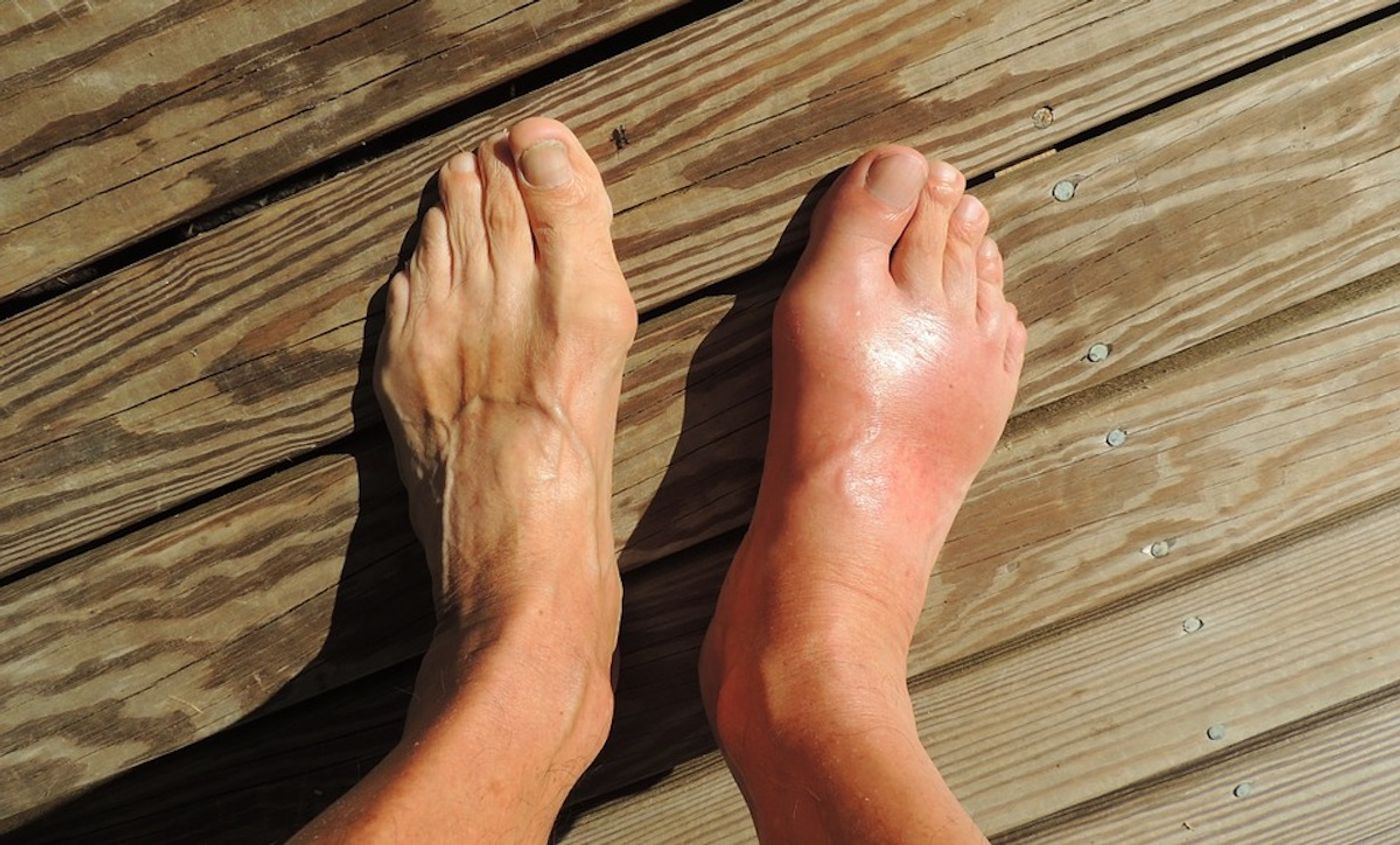Risk Factors for Gout Revealed by Genome-Wide Association Study
Gout is a common type of arthritis and causes severe and sudden pain, redness, and swelling in the joints. It can come and go, but the attacks can make it feel like a joint is on fire. It’s known that high levels of uric acid in the blood can lead to the formation of gout crystals in the joints, which are a hallmark of the disease. Around eight million Americans are thought to have the disorder. Now scientists have learned more about the genetic influences that can lead to the condition, which may aid in the development of new treatments.
Reporting in Nature Genetics, the scientists used measurements of urate (which produces uric acid when broken down) and genetic data obtained from 457,690 people to perform a genome-wide association study (GWAS). Such studies reveal links between certain loci, locations in the genome, and specific traits - in this case, high urate levels. This GWAS identified 183 loci, many of which have not been previously found, linked to gout. Many of the loci contained genes that are active in liver and kidney cells, where urate is produced and excreted. These loci can help predict who is at risk of developing the illness.
"These findings may be useful in developing screening tests for gout risk so that patients who are at risk can adopt dietary changes to avoid developing the condition," said lead study author Adrienne Tin, Ph.D., an assistant scientist in the Department of Epidemiology at the Bloomberg School. "The urate-related gene variants and biological pathways uncovered here also should be useful in the search for new ways to treat gout."
Further work showed that 114 specific genetic variants can be connected to gout. Many of these variations were also found in genes that play a role in the processing of urate. The scientists created a genetic risk score for individuals based on the loci they identified, and tested it; the score was able to group people into risk groups. For the 3.5 percent of individuals that fell in the categories of highest risk, gout was three times as common as people in the typical risk categories.
"These genetic variants we highlighted can now be studied further to identify how they contribute to high urate levels, and to determine whether they would be good targets for treating gout," Tin added.
As diets around the world have changed to include more meat, the rate of gout has risen. A type of molecule called purines are higher in diets rich in shellfish and meat, and beer also carries high levels of purines.
Sources: AAAS/Eurekalert! via Johns Hopkins University Bloomberg School of Public Health, Nature Genetics









